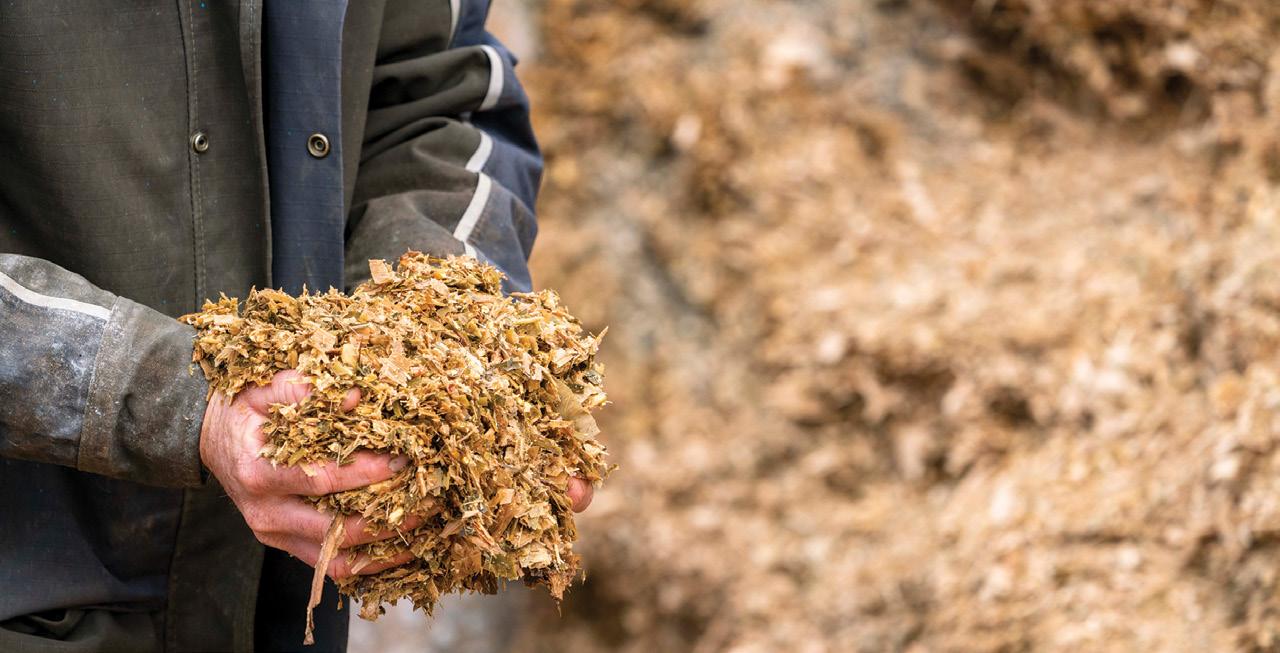
3 minute read
Maize silage, the ideal spring supplement
What’s NEW?
SOLUTIONS MAIZE SILAGE
Milk for the young ones
After more than 30 years working with calf rearers across the country, Ngahiwi Farms owner Bill Coates has seen the industry evolve into an efficient production system to feed New Zealand’s export beef markets. Ngahiwi Farms has been supplying calf and lamb milk powders into the local feed market since 1987, initially supplying downgraded whole milk powders from the Dairy Board directly to farms in Northland and Waikato. The company now sells its Ngahiwi Farms branded products through the major merchant stores nationally. “A lot has changed in the 30 years we have been operating in this industry. We have learnt a lot about the science behind rearing, and the importance of early nutrition for young animals,” he says. Ngahiwi was a sponsor of trials in the early 2000s that pioneered once-a-day feeding and also helped fund research into the issue of bloat in lambs reared on milk replacer. “We place huge emphasis on our additives and premixes, making sure a calf or lamb gets specific vitamins and minerals to aid in growth and development to set them up for a healthy productive life,” Coates says. Ngahiwi Farms operates its own manufacturing facility in Auckland, employing experienced staff who manufacture high quality products using locally sourced casein and whey powder ingredients. “There are a lot of imported options in the NZ market, mostly manufactured in Europe and shipped into NZ. We are proudly locally owned, and our main focus is to use locally sourced raw ingredients and re-purpose downgraded milk powders out of NZ dairy factories,” he says. Ngahiwi manufactures both a casein-based curding product and a whey-based, more affordable option, which can be used to fortify whole milk or fed as a stand-alone powder for colostrum-proven calves from week three.
Maize silage is the ideal supplement to carry minerals needed to reduce the incidence of metabolic diseases.
Maize silage, the ideal spring supplement
Maize silage has a long history of being recognised by farmers as the premier feed for helping to keep weight on cows regardless of the ups and downs of spring pasture supply.
Because maize silage is a digestible (70-74% digestibility), high (30- 35%) starch forage, it is the ideal farm systems supplement to help farmers feed their cows to prevent excessive loss of body condition and fill feed gaps.
Maize silage is also the ideal supplement to carry minerals needed to reduce the incidence of metabolic diseases such as milk fever. It tastes great and at between 30-40% drymatter, there is enough moisture to cause minerals to “stick” to it, meaning cows end up ingesting most of the mineral applied.
Because maize silage is a forage, every kilogram of maize silage drymatter fed to grazing cows will result in some pasture being left behind. While this can be a problem if cows are being adequately fed on pasture, when pasture supply is limited due to either a cold wet spring or because autumn/winter growth rates are lower than budgeted for, feeding maize silage and leaving a bit more pasture in the paddock is a good thing.
In times like these maize silage will provide energy to keep cows milking, prevent the loss of excessive body weight and reduce the risk of slow pasture recovery associated with overgrazing.
Sometimes in spring pasture becomes too wet to safely graze without pugging. Maize silage can be fed on a feed pad before cows are given their pasture break which helps prevent pugging caused by excessive time spent by hungry cows on wet ground.
The rules for managing pasture in spring with maize silage are simple. If post-grazing residuals get below 1500-1600kgDM/ha, feed more maize. If the residuals get above 1800 kgDM/ha, feed less. And if you don’t need it, don’t feed it. Simply shut the stack down and leave it for the next time you are short of feed.
If you want to find out more about feeding maize silage, head to Pioneer.nz










